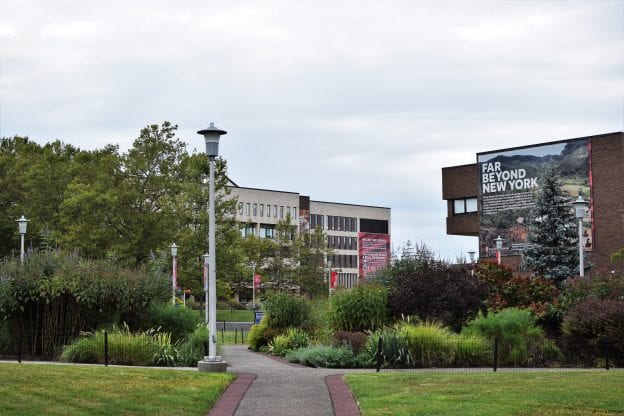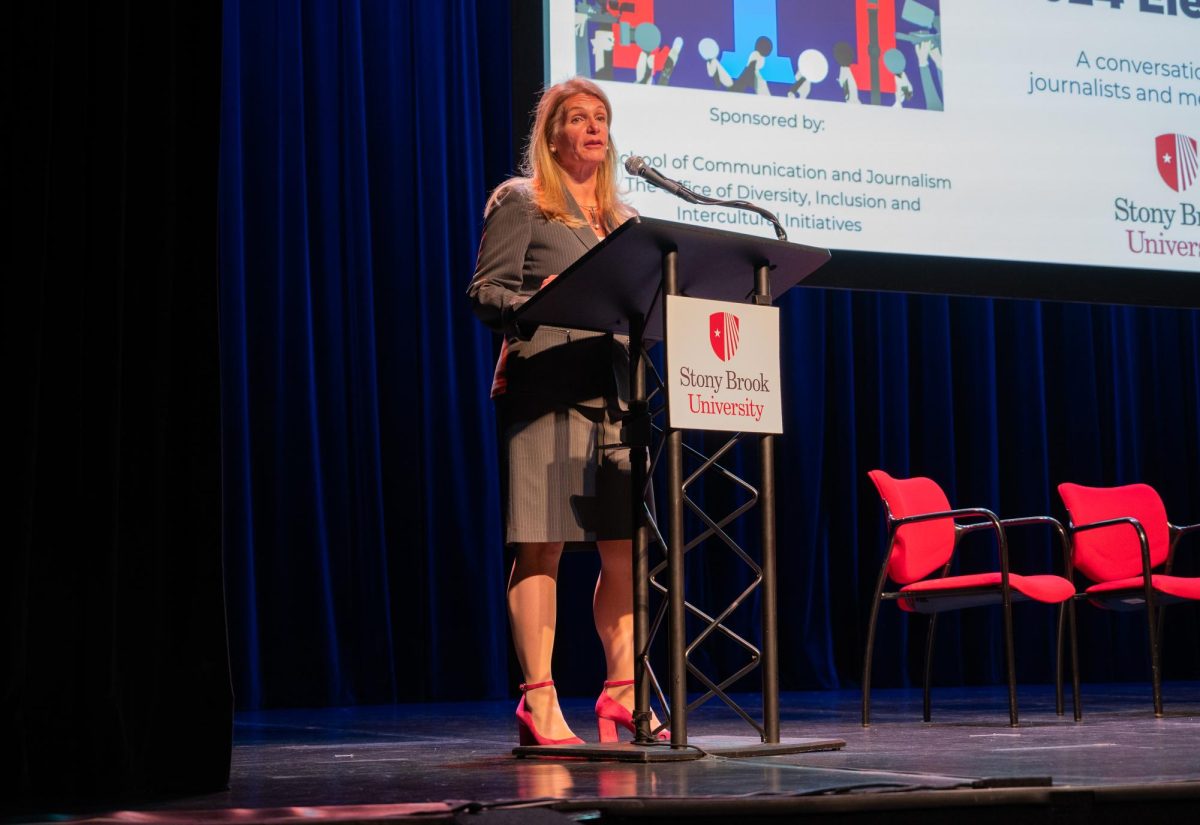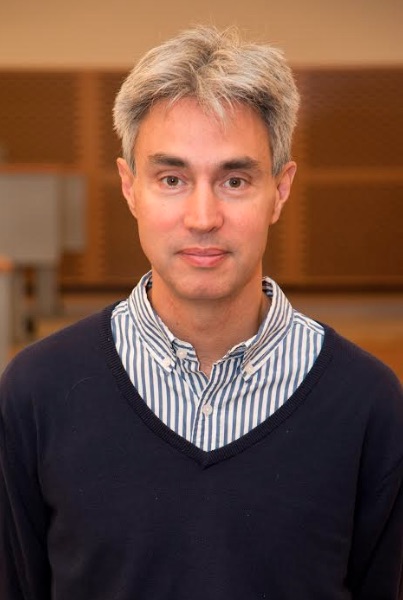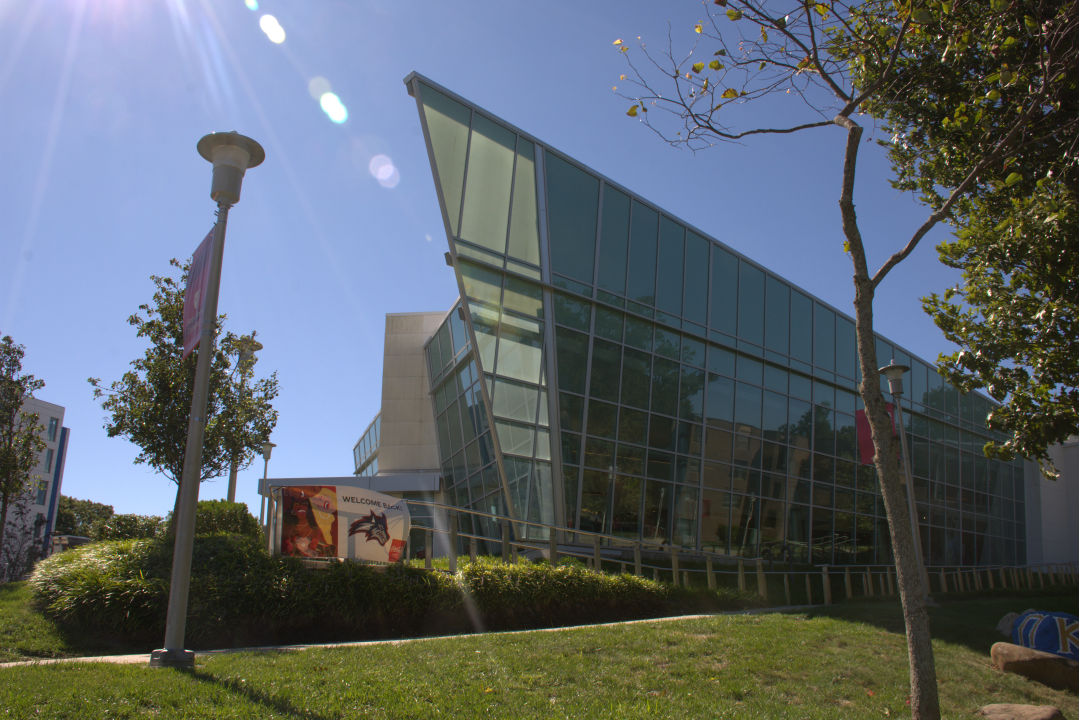
Two Stony Brook University professors criticized the university’s reliance on campus police and prison labor in an op-ed published in the African American Intellectual History and Society’s “Black Perspectives” blog last month.
Robert Chase, an associate professor in the history department and Yalile Suriel, a doctorate student in the history department, argue that if universities claim that Black lives matter, they should reconsider any ties with prison labor and campus policing. The article comes in the wake of the tremendous growth of the Black Lives Matter movement after the killing of George Floyd, bringing renewed attention to Stony Brook University’s own policies.
“As scholars of mass incarceration and civil rights, we wrote this article because we felt it was critically important that university administrators, faculty, and college students consider how their own campuses are also spaces that reproduce systematic racial oppression through such things as exploitative prison labor and, at times, aggressive and racially targeted policing,” Chase said in an interview with The Statesman.
Stony Brook University is no stranger to forced prison labor, as the school spent around $19,974 on prison-made goods in 2019, according to the New York State Department of Corrections and Community Supervision (NY-DCCS) in Chase’s article. The entire SUNY system spent about $484,295 on the goods made by cheap labor through Corcraft, which is run by the NY-DCCS.
SUNY has a contract with Corcraft that labels them a preferred source, meaning SUNY is obligated to use Corcraft whenever possible. Inmates forced to produce products for Corcraft are paid a starting wage of 16 cents per hour and a maximum wage of 65 cents per hour, according to the NY-DCCS.
“Mass incarceration in the United States is an especially virulent system for racial oppression and anti-Blackness,” Chase said. “Despite the civil rights revolution that eradicated Jim Crow segregation, the subsequent era of mass incarceration has turned the gains of the civil rights era into another age of racial disparity.”
Stony Brook University has purchased student desks, chairs and dormitory furniture made through forced prison labor for more than 30 years.
Chase said that universities will have to do more than simply offer empathy and speak about racial justice, and implement social justice on their own campuses by challenging and changing past practices.
“That is why we called on universities, including our own here at Stony Brook, to divest from exploitative prison labor and aggressive and racially targeted policing practices,” he said.
In an op-ed from the Stony Brook Press, Joe Amendola argues that the university’s use of products that employ prison labor contradict their public statements affirming that they would always stand for racial justice.
Amendola decided to write his piece after seeing Stony Brook’s statement on their commitment to racial and social justice.
“In times of increased political awareness, there are always going to be institutions that seek to obfuscate their own roles in systemic injustices by putting out these sorts of mild, PR-infused statements,” he said. “I don’t think these institution’s statements are ever to be taken at their word, and their feet should always be held to the fire, so to speak.”
Students also started a thread on Stony Brook’s subreddit last month entitled “Help end the use of prison labor at SBU,” that includes an email template to send to President Maurie McInnis, Provost and Senior Vice President for Academic Affairs Michael Bernstein and Chief Diversity Officer Judith Brown Clarke.
“Start by acknowledging that your institution is silently complicit, and hold yourselves accountable by ending it,” the template reads. “I have spent countless hours on your campus, and your facilities pride themselves as being a safe space where I was encouraged to think ‘far beyond.’ I’d like to think that we are far beyond supporting the prison industrial complex.”
Chase believes that the post is a powerful example of students being socially conscious, politically aware and showing empathy.
“I applaud it and I think that it is exactly what needs to happen in every level of society,” he said.
Prisoners do not have labor rights in the U.S. The 13th Amendment says that “neither slavery nor involuntary servitude, except as punishment for crime whereof the party shall have been duly convicted, shall exist within the United States, or any place subject to their jurisdiction,” meaning that incarcerated people can be forced to work as punishment for their crimes.
Prisoners have no right to refuse prison labor, are not allowed to form unions and receive no compensation if they are injured while working, according to Chase.
The op-ed Chase and Suriel co-wrote also focuses on campus policing. Suriel said that across the nation, some of the problems college campuses have faced with the police include racial profiling, use of excessive force, militarization and increased surveillance.
“This is because in many places, including in the SUNY system, our officers are fully sworn and trained officers with the authority to investigate and enforce all laws,” Suriel said in an interview with The Statesman. “If universities are supposed to exist for students, then students should have a significant say in university policy.”
The Stony Brook University police department (SBUPD) has been an accredited agency by the New York State Department of Criminal Justice since 2010. They come in to inspect and evaluate the university department to make sure it’s functioning properly, including a reaccreditation every five years, according to University Assistant Chief of Police Chief Eric Olsen.
The department consists of 190 employees, including 68 sworn law enforcement officers that are a part of a patrol division, detective division, a community relations team, 911 dispatchers and security service assistants.
The movement to defund the police has reached campuses across the country. Proponents argue that resources and money from the police department should be reallocated to other campus services, such as student mental health and educational programs.
“Whether this [defunding the police] happens at Stony Brook University or not would be up to students, faculty, and staff to demand greater transparency and greater say in how funds are allocated,” Suriel said.
The History Graduate Student Association (HGSA) launched a petition to abolish the SBUPD and reinvest its resources into the campus community. The HGSA asked Stony Brook student organizations to sign the letter addressed to university administration in a mass email on July 4.
Olsen said he and the SBUPD is willing to listen to ideas on defunding the department.
“We will always be willing to listen to ideas that we can work with the community to help better serve the community,” he said. “With defunding, or changing funding or how to use our funding, we’d always be willing to listen.”
Suriel said the campus community should discuss SBUPD’s relationship with the Suffolk County police department (SCPD).
Jeffrey McClure, a 26-year-old man, was shot and killed by Suffolk County police in East Northport on June 7 when his father called 911 for psychiatric help. The SCPD declined to comment on how many shots were fired, how many officers opened fire, if the officers are still in the field, and the last time lethal force was used, according to Newsday.
Additionally, Black and African American people make up about 7% of the population in Suffolk County, but account for 34% of felony arrests, according to the New York State Computerized Criminal History repository.
“So what is Stony Brook University’s relationship to the Suffolk County PD? Stony Brook is the largest employer, the economic hub of the region, what does it mean for our institution to lead in saying our budget and our practices should reflect our values?” Abena Asare, an associate professor of Africana studies and history, wrote in a reflection following a university virtual town hall on Floyd and the resulting protests.
Olsen said that the relationship between the two departments is very limited, and Stony Brook mainly works with SCPD’s specialized units.
“They don’t provide any service on a daily basis to the campus, they don’t respond to 911 calls and they don’t patrol the campus,” he said.
Olsen said that in the past, SCPD has helped with a protest that Stony Brook University students organized in Port Jefferson.
He pointed out that the SBUPD also went through a fair and impartial policing training back in 2016, that covered topics like recognizing implicit bias and implementing controlled behavioral responses. The training involved an eight hour course for each officer.
Ultimately, Chase believes that divesting from policing and the exploitation of forced prison labor is possible for Stony Brook University.
“It will require that faculty and students demand it as part of the wider movement to rethink the nation’s commitment to an overly aggressive and racially oppressive criminal justice system,” he said.






















